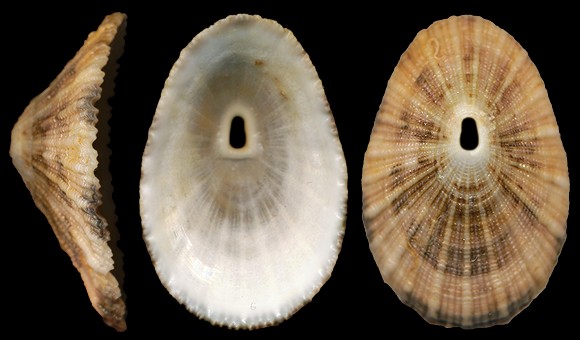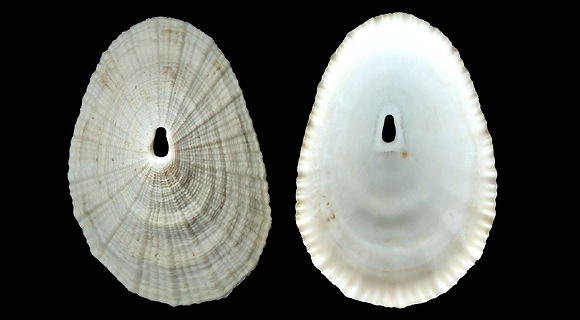
Ponza island, Isole Pontine, Lazio, W. Italy. 42mm.
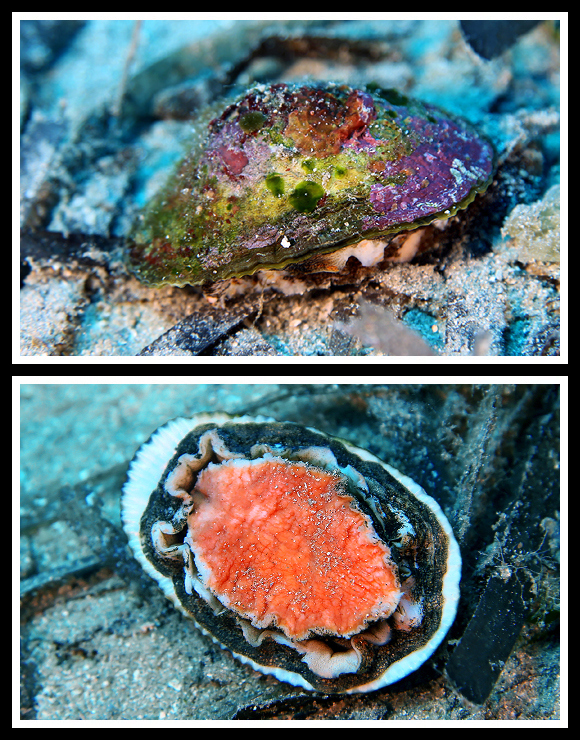
On sediments, Agiassos Bay, southwestern coast of Náxos island, Kykládes, S. Aegean. Original pictures provided by surfelife for gbif.org – (CC BY-NC).
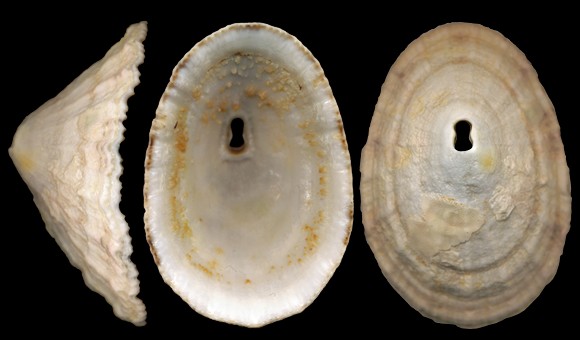
3-5m deep, feeding on sponges, Plaka, NW. of Elounda bay, Lasithi, N. Crete. 50mm.
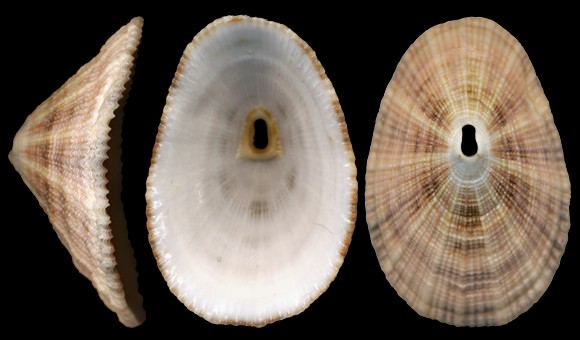
Along with D. demartiniorum and giannispadai, D. italica is markedly larger than the other species of the genus in Mediterranean. Shell high, subtriangular in shape; sculpture made of circa 18 thick costae separated by numerous thin striae of unequal strengths, and crossed by sparse concentric folds and by many thin sharp striae, especially around the top; apical aperture narrow, keyhole-shaped, slightly anteriorly placed, gibbbous inside; peristome curved, denticulate; inside whitish; muscular print darker. The animal is yellow to orange, with a large foot. – Same spot, 35mm.

Wellcome Collection Gallery – (CC BY).
He notes that this Italian Fissurella is large, with denticulate margins, « lowered at both ends. Length 30-35mm. It is found in the Piacenzian. » – J. L. M. Defrance: Minéralogie et Géologie, in Dictionnaire des Sciences Naturelles… vol. 17, Paris 1820, p.79. Fun fact: in this text, instead of the french epithet “Plaisancien”, Defrance names the Piacenzian stratigraphic level “Plaisantin”, which means “jokester”.
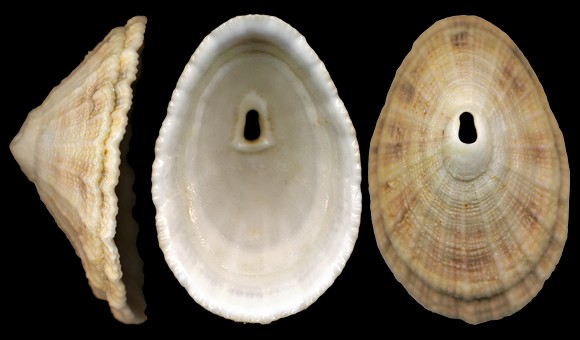
Dead collected at 5-6m deep, on bottom of muddy sand, gravel, stones, sponges and shell debris, 100m offshore, north of the mills, Elounda.
